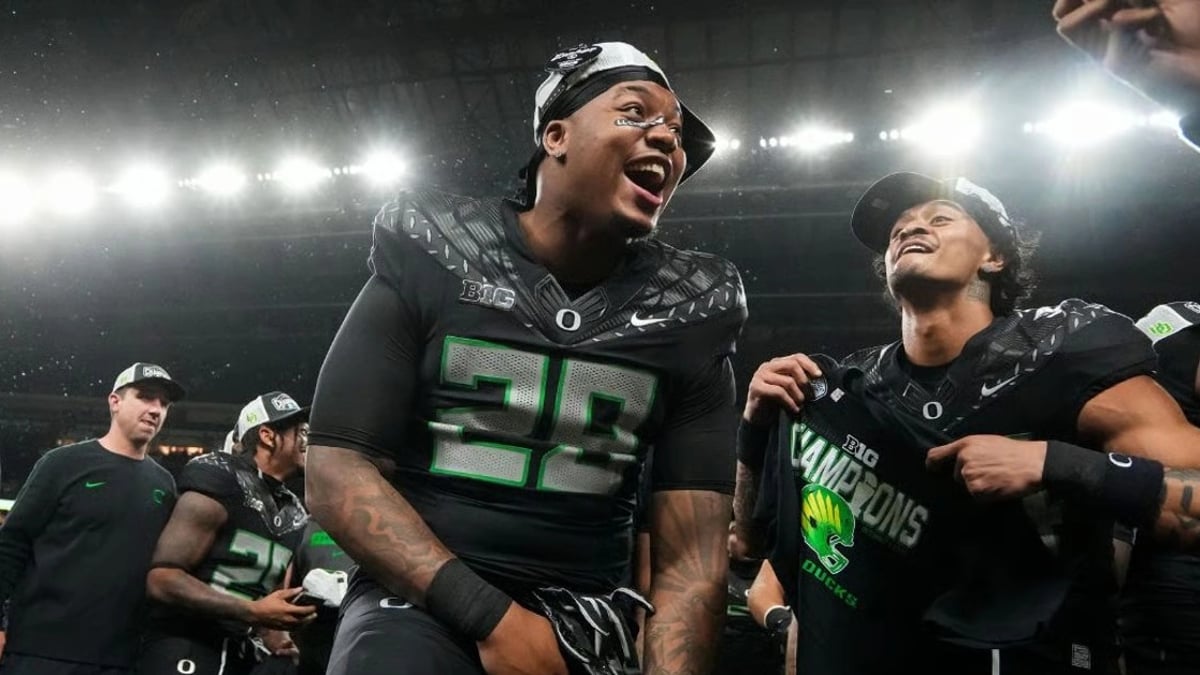College Football Betting Guide: How to Bet on College Football

Betting on college football comes down to one thing: spotting value. Because of the volume of games and unique team matchups each weekend, college football offers more opportunities for betting value than most other sports.
This guide will examine the best ways to bet on CFB and some strategies to improve your chances.
- #ad. 18+. Gamble Responsibly. Gambleaware.org. 21+. New customers in AZ, CO, CT, DC, IA, IL, IN, KS, KY, LA, MA, MD, MI, NC, NJ, OH, PA, TN, VA, VT, WV, or WY (excludes NY). Apply promotion in bet slip and place a $1+ cash wager (min odds -500) daily for 10 consecutive days starting day of account creation. Wager must settle as a loss to earn FanCash equal to losing amount (max $200 FanCash/day). FanCash issued under this promotion expires at 11:59 p.m. ET 7 days from issuance. Terms, incl. FanCash terms, apply—see Fanatics Sportsbook app. Gambling Problem? Call or Text 1-800-GAMBLER, 1-800-NEXT-STEP (AZ), 1-800-9-WITH-IT (IN), 1-888-532-3500 (VA).
Notes:
- In this article, “college football” refers to American football played at the university level in the United States. It is distinct from “football” (also known as soccer in most of the world).
- Also, all monetary examples use U.S. dollars, but the same principles apply regardless of your local currency.
- This article will focus on NCAAF odds in the American format, which you’ll commonly see at U.S. sportsbooks. But keep in mind, odds come in different forms around the world—decimal and fractional odds are also popular, depending on where you’re betting.
Understanding College Football Betting Lines & Odds
College football offers some of the most exciting opportunities for sports bettors. If you are new to college football betting, understanding the various types of bets and how odds work is crucial.
At first, American odds can feel a bit tricky, but once you get the basics down, they’re actually pretty straightforward. American odds are shown as either a plus or a minus number. A negative value (e.g., -150) represents the favorite, while a positive value (e.g., +200) represents the underdog.
For example, if you bet on a favorite at -150, you must wager $150 to win $100. If you bet on an underdog at +200, a $100 bet would win you $200 if the underdog comes out on top.
For international readers, here's how formats compare:
- American: +200
- Decimal: 3.00
- Fractional: 2/1
Most CFB betting sites allow you to switch between formats in your settings.
Types of College Football Bets
- Moneyline: This is the simplest college football bet. With this type of bet, you are simply wagering on which college football team will win the game.
- Point Spread: Instead of simply picking the winner, you are betting on whether a team will “cover the spread”—the predicted margin by which a team is expected to win or lose. The favorite must win by more than the set margin, while the underdog must lose by less than the margin or win outright.
- Over/Under (Totals) Bets: Over/under bets, also known as totals betting, involve wagering on the total points scored by both teams combined. Sites set a specific number, and you bet on whether the total combined points will be over or under that number.
- Player Prop Bets: Player prop bets focus on individual player performances or specific events within the game. They are an excellent way to enhance the excitement of a game and test your knowledge of trends, but check your local guidelines regarding prop betting on college athletes.
- Futures: Futures bets allow you to wager on outcomes that will happen in the future, such as whether Texas will win the national championship or who will win the Heisman Trophy. These bets often offer bigger payouts and allow you to lock in your wager long before the event is decided.
- Live Bets: Live betting allows you to place bets while the game progresses. Based on the unfolding action, the odds change in real time, allowing you to adjust your wagers as the game progresses.
- Parlays: Parlay bets, also known as accumulators or multis, involve combining multiple bets into one, where all your picks must win for you to collect a payout. While parlay bets are riskier, they offer higher potential payouts because of the added difficulty in hitting multiple outcomes.
Key Factors to Consider When Betting on College Football
Betting on college football requires careful analysis of various factors to maximize your chances of success. Here are some key elements to focus on when placing college football bets:
Analyze Team Form & Statistics
Understanding team performance and player statistics is essential for making informed college football bets. Evaluate recent form, offensive and defensive stats, and head-to-head matchups.
Historical data, such as how teams performed against similar opponents, can offer valuable insights into potential outcomes.Home-Field Advantage
Home-field advantage plays a significant role in college football. The energy of a passionate crowd and the familiarity of playing on home turf can elevate a team’s performance. Sometimes, specific stadiums are known for their intense atmosphere, making it challenging for visiting teams.
Pay attention to how teams perform at home versus on the road when placing your college football bets.Weather Conditions
Weather can drastically impact game outcomes. Rain, snow, or high winds can force teams to adjust their strategies. For instance, rain might limit passing plays, while snow could affect players' footing.
Always check the weather forecast before placing bets, as certain conditions may benefit one team’s style of play over another.Player Availability & Injuries
Key player injuries or suspensions can greatly influence game results and betting odds. If a star quarterback or a defensive leader is sidelined, the game can tilt in favor of the opposing team.
Keep an eye on injury reports and player availability updates, as these can provide vital information for your betting decisions.Coaching Strategies & Team Dynamics
College football coaches have varying styles, and understanding their strategies is key. Some prefer aggressive, high-scoring games, while others emphasize strong defense.
Additionally, team dynamics—such as the chemistry between players and coaches—can affect performance.
Study coaching tactics and team morale to make well-rounded betting decisions.
Popular College Football Betting Strategies
Betting on Underdogs
Everyone loves upsets during the college season, and picking underdog teams with a chance of an upset can be a rewarding strategy. Look for matchups where the underdog has specific strengths that align with the favorite’s weaknesses.
For example, an underdog team with a strong running game may succeed against a favorite with a poor rush defense. Similarly, home-field advantage can help an underdog outperform expectations, especially in college football, where the atmosphere can be electric.
Another factor to consider is how public perception influences the betting lines. Teams that are historically popular or have had successful past seasons may be overvalued, presenting a better opportunity for the underdog. Focus on teams with consistent performance patterns, even if they’re not as well-known. By doing proper research, you’ll better identify spots where the underdog can pull off the upset.
Live Betting
Live betting, or in-play betting, allows you to place wagers in real time as a college football game progresses. This strategy will enable you to adjust your bets based on how the game unfolds. For instance, if a favorite starts slow but shows signs of improvement, live betting offers the chance to capitalize on better odds than were available pre-game.
Live betting also lets you hedge your bets if your pre-game bet is losing or double down if things go your way.
For example, if an underdog performs well early, you can place a live bet to either back the favorite at improved odds or support the underdog if momentum continues moving in their favor. This flexibility makes live college football betting dynamic and exciting, though it requires quick decision-making and real-time knowledge of the game’s ebb and flow.
Arbitrage Betting
Arbitrage betting involves taking advantage of differing odds across various sites to secure a guaranteed profit. This can happen in college football when one book has a line that favors the favorite while another has more favorable odds on the underdog. You can lock in a profit regardless of the game’s outcome by betting on both sides at the right amounts.
To find arbitrage opportunities, you need access to multiple betting sites and be ready to react quickly. Small differences in odds can create windows for arbitrage, but these opportunities often don’t last long as bookmakers adjust their lines regularly.
While this strategy can be highly effective, it’s also important to note that some betting operators frown upon arbitrage betting and may restrict accounts they suspect of using it. Use various platforms to increase your chances of finding profitable odds.
How College Football Works
There are 134 NCAA Division I college football teams, split across 10 regional divisions, with dozens of independent teams. All 134 colleges are eligible for the College Football Playoff (CFP).
Who makes the CFP isn’t entirely up to merit, though, like in the NFL. Instead, a 13-member CFP selection committee picks the top 12 teams from the season and nominates them to play in the CFP. Teams ranked 1-4 get a bye, while 5-8 play in a single-elimination knockout round held in NCAAF bowl games.
The top four teams are then added back to the pot and will compete against the winners from the first round. At the end of the CFP, one team wins the national championship.
Futures bets on who will make the CFP and who will win the national championship are some of the most popular college football bets each season. Single-game bets are also obviously very popular at college football betting sites.
Final Thoughts on College Football Betting
College football betting offers an exciting and dynamic way to engage with one of the most popular sports in the U.S. From legendary rivalries to high-stakes conference matchups, college football's unpredictability makes just about every game a thrilling betting opportunity.
If you’re new to sports betting, starting with college football allows you to explore various betting options, from simple moneyline bets to complex parlays and prop bets.
If you’re ready to dive in, now is a great time to sign up with trusted online betting apps and explore strategies. The variety of bets, combined with the passion of college football fans, makes for an exhilarating experience. With every play, you can make your predictions count, whether you’re betting on a favorite or taking a chance on an underdog upset.














